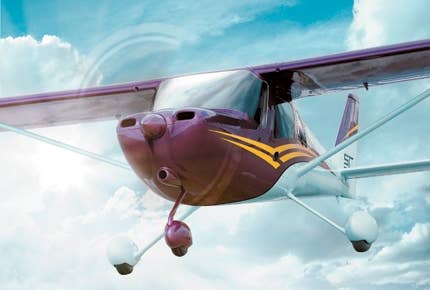
When Cessna launched its new light-sport aircraft Model 162 at Oshkosh last summer, it said the airplane would be built outside of the United States, but didn?t say where. In late November the company announced the 162 SkyCatcher would be manufactured by Shenyang Aircraft Corporation in China. Cessna will do all design and compliance verification work and will have on-site personnel to conduct quality assurance, and Shenyang will be responsible for assembling the airplane.
From the beginning, the goal of the 162 program was to reduce the cost and complexity of flight training. To make a significant reduction in expense Cessna knew the airplane had to be produced in a lower-cost environment than the U.S. aerospace industry can provide. The first 1,000 SkyCatchers carry a standard price of $109,500, and subsequent orders will be priced at $111,500. The order book is already closing in on 900. Published estimates suggest it would cost at least $70,000 more to produce the 162 in the United States.
Another important element in the decision to manufacture outside the United States is the global market for the 162. It is becoming very apparent that there is a worldwide shortage of pilots, and Cessna expects the training program it is building around the 162 to be key to producing well-trained pilots in all parts of the world. With the United States accounting for less than 50 percent of the new orders for business jets, it seems likely the SkyCatcher will also find a big, if not dominant, market share outside the country.
Shenyang was founded in 1951 as a civilian and military aircraft manufacturer and its 16,000 employees do work for many major aerospace firms, including Boeing and Airbus. The flat glass avionics system in the 162 will be built by Garmin, and the engine is a new version of the venerable 100 horsepower Continental O-200D. The 162 is built from aluminum using conventional construction techniques. To remain in the LSA category limits, the 162 will have a maximum takeoff weight of 1,320 pounds, top cruise speed of 118 knots and be approved for VFR day and night operations. The prototype is expected to fly in Kansas in the first half of this year, and deliveries are scheduled to begin in the second half of 2009.

Sign-up for newsletters & special offers!
Get the latest FLYING stories & special offers delivered directly to your inbox






